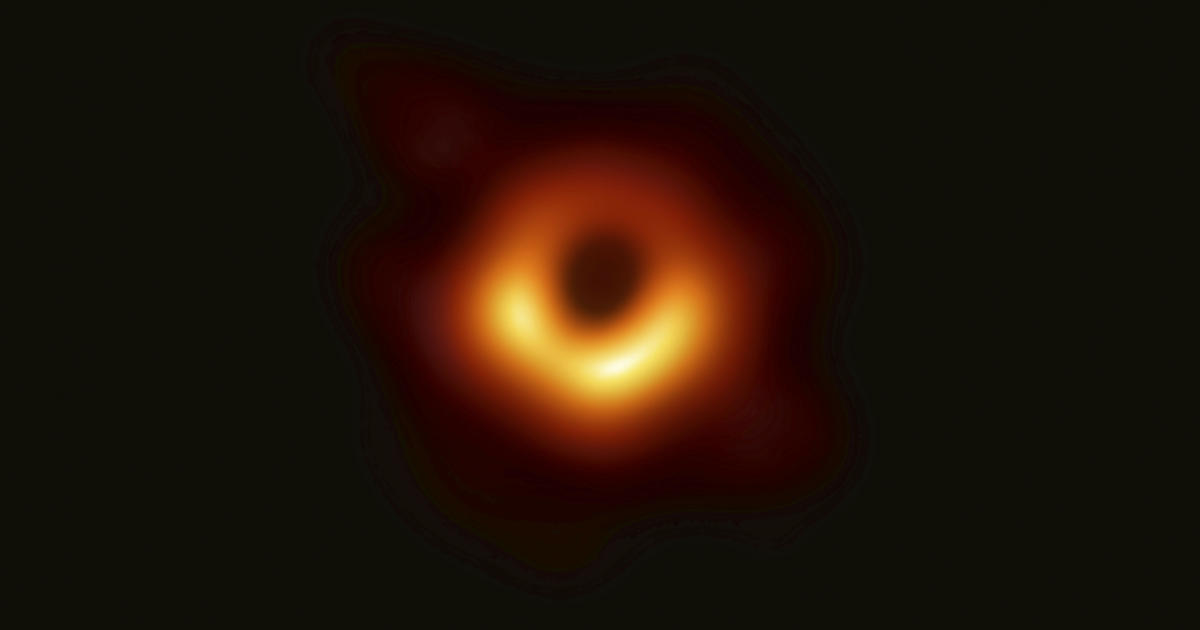Last year, a telescope captured the very first image of an “unseeable” black hole, dazzling the scientific community and space enthusiasts alike with a static picture of M87*, the supermassive object at the heart of the Messier 87 galaxy. Now, more images reveal that the black hole appears to be “wobbling” — a big surprise to researchers.
Since releasing the historic photo, scientists have studied archival data sets from 2019-2013 to better understand how the black hole behaves. They found the presence of a consistent shadow in the shape of a crescent — and noticed that it has rotated significantly over the last decade.
The brightness of M87* appears to be flickering over time, likely due to it expelling and consuming nearby matter that gets caught in its intense gravitational pull, scientists said in a new study published in The Astrophysical Journal. As the ring of gas, which is heated to billions of degrees, turbulently makes its way through magnetic fields, the black hole does a sort of dance, causing its appearance to change over time.
This image released Wednesday, April 10, 2019, by Event Horizon Telescope shows a black hole. Scientists revealed the first image ever made of a black hole after assembling data gathered by a network of radio telescopes around the world.
Event Horizon Telescope Collaboration/Maunakea Observatories via AP
“Last year we saw an image of the shadow of a black hole, consisting of a bright crescent formed by hot plasma swirling around M87*, and a dark central part, where we expect the event horizon of the black hole to be,” lead author Maciek Wielgus, an astronomer at Harvard and Smithsonian’s Center for Astrophysics, said in a news release. “But those results were based only on observations performed throughout a one-week window in April 2017, which is far too short to see a lot of changes.”
The wobbling is big news — it allows scientists to study the object’s accretion flow, which is the rate of material entering a black hole, and relativistic jets, which is the outflow of that very energetic material. Studying that region is key to understanding how the black hole and surrounding matter interact with the host galaxy.
M87*, which is located about 55 million light years away in the constellation Virgo, has an enormous mass of 6.5 billion suns. While the ring has rotated, its shape hasn’t changed, and its diameter remained consistent with Einstein’s theory of general relativity, scientists said.
Snapshots of the M87* black hole obtained through imaging / geometric modeling, and the EHT array of telescopes in 2009-2017. The diameter of all rings is similar, but the location of the bright side varies. Credit: M. Wielgus, D. Pesce & the EHT Collaboration
“In this study, we show that the general morphology, or presence of an asymmetric ring, most likely persists on timescales of several years,” said co-author Kazu Akiyama, from the MIT Haystack Observatory. “This is an important confirmation of theoretical expectations as the consistency throughout multiple observational epochs gives us more confidence than ever about the nature of M87* and the origin of the shadow.”
The historic image of the supermassive black hole was captured by the Event Horizon Telescope (EHT) and released in April 2019. The image does not actually show a black hole, which are known for sucking up light, but rather its shadow, a glowing orange ring of ultra-hot gas.
Scientists are hopeful their new findings provide a framework for the further study of not only M87*, but all black holes.
“These early-EHT experiments provide us with a treasure trove of long-term observations that the current EHT, even with its remarkable imaging capability, cannot match,” Shep Doeleman, the Founding Director of EHT, said in a release. “When we first measured the size of M87* in 2009, we couldn’t have foreseen that it would give us the first glimpse of black hole dynamics. If you want to see a black hole evolve over a decade, there is no substitute for having a decade of data.”
